-
Posts
3,939 -
Joined
-
Last visited
-
Days Won
1
Content Type
Profiles
Forums
Blogs
Gallery
Events
Store
Posts posted by Christophe
-
-
Maxim,
Bravo and congratulations !! Impressive !! Well done !!!
Cheers.
Ch.
0 -
Hi,
And congrats to both of you !!!

But, Harvey is the winner !!!!

He is Artem Mikoyan !!
(From Wikipedia) :
"Artem Ivanovich Mikoyan (5 August 1905 — December 9, 1970) was a Soviet Armenia aircraft designer of Armenian descent. In partnership with Mikhail Iosifovich Gurevich he designed many of the famous MiG military aircraft.
Mikoyan was born in Sanahin, Armenia.His older brother, Anastas Ivanovich Mikoyan, would become a senior Soviet politician. He completed his basic education and took a job as a machine-tool operator in Rostov, then worked in the "Dynamo" factory in Moscow before being conscripted into the military. After military service he joined the Zukovsky Air Force Academy, where he created his first plane, graduating in 1937. He worked with Polikarpov before being named head of a new aircraft design bureau in Moscow in December 1939. Together with Gurevich, Mikoyan formed the Mikoyan-Gurevich design bureau, producing a series of fighter aircraft. In March, 1942, the bureau was renamed OKB MiG (Osoboye Konstruktorskoye Büro), ANPK MiG (Aviatsionnyy nauchno-proizvodstvennyy kompleks) and OKO MiG. The MiG-1 proved to be a poor start, the MiG-3 was misused[clarification needed] and the MiG-5, MiG-7 and MiG-8 Utka were effectively research prototypes.
Jet Aircraft Designs
Early post-war designs were based on domestic works as well as captured German jet fighters and information provided by Britain or the US. By 1946, Soviet designers were still having trouble in perfecting the German-designed, axial-flow jet engine, and new airframe designs and near-sonic wing designs were threatening to outstrip development of the jet e
ngines needed to power them. Soviet aviation minister Mikhail Khrunichev and aircraft designer Alexander Sergeyevich Yakovlev suggested to Joseph Stalin that the USSR buy advanced jet engines from the British. Stalin is said to have replied: "What fool will sell us his secrets?" However, he gave his assent to the proposal, and Artem Mikoyan, engine designer Vladimir Klimov, and other officials traveled to the United Kingdom to request the engines. To Stalin's amazement, the British Labour government and its pro-Soviet Minister of Trade, Sir Stafford Cripps were willing to provide technical information and a licence to manufacture the Rolls-Royce Nene centrifugal-flow jet engine. This engine was reverse-engineered and produced in modified form as the Soviet Klimov VK-1 jet engine, later incorporated into the MiG-15 (Rolls-Royce later attempted to claim £207m in licence fees, without success).
In the interim, on April 15, 1947, Council of Ministers issued a decree #493-192, ordering the Mikoyan OKB to build two prototypes for a new jet fighter. As the decree called for first flights as soon as December of that same year, the designers at OKB-155 fell back on an earlier troublesome design, the MiG-9 of 1946. The MiG-9 suffered from an unreliable engine and control problems.
The I-270, a prototype based on German concepts, developed into the I-310 in the USSR and into F-86 Sabre in the States. With the Klimov version of the British Nene jet engine, this design became the MiG-15, which first flew on December 31, 1948. Despite its mixed origins, this aircraft had excellent performance and formed the basis for a number of future fighters. The MiG-15 was originally intended to intercept American bombers such as the B-29 Superfortress, and was even evaluated in mock air-to-air combat trials with interned ex-U.S. B-29 bombers as well as the later Soviet B-29 copy, the Tupolev Tu-4. A variety of MiG-15 variants were built, but the most common was the MiG-15UTI (NATO 'Midget') two-seat trainer. Over 18,000 MiG-15s were eventually manufactured, then came the MiG-17, and MiG-19.
The MiG-15s were the jets used during the Korean War by Communist forces, and "MIG Alley" was the name given by U.S. Air Force pilots to the northwestern portion of North Korea, where the Yalu River empties into the Yellow Sea. During the Korean War, it was the site of numerous dogfights between U.S. fighter jets and those of the Communist forces, particularly the Soviet Union. The F-86 Sabre and the Soviet-built MIG-15 'Fagot' were the aircraft used throughout most of the conflict, with the area's nickname derived from the latter. Because it was the site of the first large-scale jet-vs-jet air battles, MIG Alley is considered the birthplace of jet fighter combat.
Later work
From 1952 Mikoyan also designed missile systems to particularly suit his aircraft, such as the famous MiG-21. He continued to produce high performance fighters through the 1950s and 1960s.
He was twice awarded the highest civilian honour, the Hero of Socialist Labor and was a deputy in six Supreme Soviets.
After Mikoyan's death, the name of the design bureau was changed from Mikoyan-Gurevich to simply Mikoyan. However, the designator remained MiG. Many more designs came from the design bureau such as the MiG-23, MiG-29 and MiG-35 and variations.
He was buried in the Novodevichy Cemetery in Moscow."
As an anecdote, he is the grand-father of a good friend of mine, living today in Moscow...
Again, Harvey, congrats !!!

Your turn, now....
Cheers.
Ch.
0 -
Sorry Harvey, it is not him...

First hint : our man is twice Hero of Socialist Labor (and not Hero of the Soviet Union, as the portrait could let think...).
Ch.
0 -
Let's try an easy one...

Question # 42 :
Who am I ?
If no one finds, I will give more details later....
Good hunt and good luck !!

Ch.
 0
0 -
Thanks Jim....

Need a little bit time to find a new question...
Meanwhile, a few words about Sokolovsky (from Wikipedia, sorry...) :
"Vasily Danilovich Sokolovsky (Russian: Васи́лий Дани́лович Соколо́вский) (July 21, 1897 - May 10, 1968) was a Soviet military commander.
Sokolovsky was born into a peasant family in Kozliki, a small town in the province of Grodno, near Białystok in Poland (then part of the Russian Empire). He worked as a teacher in a rural school, where he took part in a number of protests and demonstrations against the Tsar. He joined the Red Army in February 1918.
He began his formal military schooling in 1919, but was frequently called up by the Red Army and forced to leave his schoolwork. He graduated in 1921 and was made the chief of staff of a division stationed in Turkmenistan. During a battle near Samarkand, he was wounded, and subsequently decorated for bravery. After the Russian Civil War, he held a number of staff positions, eventually becoming the chief of staff for the Moscow Military District and then the Deputy Chief of the General Staff, the position he held at the beginning of the German invasion of the Soviet Union, Operation Barbarossa.
In December 1941, when German forces were a mere 20 kilometers from Moscow, Sokolovsky was made the chief of staff of the Western Front, where he was able to help co-ordinate the Soviet winter counter-attacks that pushed the Germans away from Moscow. He remained in this position until February 1943, when he became the commander of Western Front.
He led this front through the Kursk battles, until April 1944, when the Western Front was broken into two, and Sokolovsky was made chief of staff of 1st Ukrainian Front. He remained in this position until the end of the war. As the chief of staff of 1st Ukrainian, Sokolovsky helped plan and execute the Berlin operation, among others. After the war, Sokolovsky was the deputy commander in chief of Soviet forces in East Germany, until July 3, 1946.
On that day Sokolovsky was promoted to the rank of Marshal of the Soviet Union, and also made commander in chief of Soviet forces in East Germany. In 1949 he was made the Deputy Minister of Defense, a position he held until 1952, when he was made the Chief of the General Staff. In 1960, Sokolovsky was made the Inspector-General of the Ministry of Defense. He retained this position until his death on May 10, 1968.
Sokolovsky became widely known in the West with the publication in 1962 of Military Strategy, a book that contained rare detail on Soviet thinking about war, particularly nuclear war.
Sokolovsky was a key member of the Soviet war command during World War II as an excellent planner and a fine military leader. He was particularly well trusted by Marshal Georgy Zhukov. The urn containing Sokolovsky’s ashes is buried in the Kremlin.
Sokolovsky was a prominent figure in William T. Vollmann's 2005 National Book Award winning novel, Europe Central."
Ch.
0 -
Better pic... I have a high definition pic of his awards, but not the software complying with the maximum size asked by the Forum...
BTW, these awards are displayed in the Central Armed Forces Museum of Moscow...
Ch.
PS : Jim, just a few RRoubles to pay, you get a nice orange or pink bracelet, and you are allowed to take as many pics as you wish... Easier, no ? :cheeky:
 0
0 -
Hi Jim,
What would you say of : Marshal of the Soviet Union Vasily Danilovich Sokolovsky (Russian: Васи́лий Дани́лович Соколо́вский) (July 21, 1897 - May 10, 1968) ?

Cheers.
Ch.
 0
0 -
Hi Jim,
Happy to be back !!!!

But, as soon as this night, I will be on the road, away for holidays... So, sorry, no time enough to ask for a question... I pass on my turn, and hope someone will have a good one !!
 ))
))Cheers.
Ch.
0 -
-
Ok, let's give a try...

Question 34
There should have been seven of us but only one of us is still on active duty.
What are we?
Typhoon class submarines Project 941).
How were we known in the USSR and NATO?
NATO reporting name "Typhoon", but with USSR name "Akula".
What is the name of the remaining one and what has become of the other six?
Remaining one : TK-208 Dmitriy Donskoy. Still In service. Upgraded to project 941UM for use of Bulava missiles.
4 have been scrapped.
2 are kept in reserve, but not active.
We are well known in the west - who made us 'famous' and how?
The use of the word "Typhoon" ("Тайфун") have been made by Leonid Brezhnev in a 1974 speech while describing a new type of nuclear ballistic missile submarine.
Probably the most well-known fictional Typhoon class was the stealth submarine Red October. It is the subject of the Tom Clancy novel The Hunt for Red October and the movie adaptation of that book.
Ch.
0 -
PS - I am back in the quiz after sitting out Christophe's question

Plus I also take it that Christophe is also back in the running to answering quizchallenges .... look out for his spiralling climb to the top

Jim :cheers

Cheers.
Ch.
0 -
Hi Harvey,
Perfect answer !!

It is Rodina Mat in Kiev.
I was there last week-end for the first time, and visited the GPW Museum underneath. Interesting place, even if all the orders displayed are copies...
Your turn, now !!
Cheers.
Ch.
0 -
Thanks, Jim, for your kind words !!!


Now, back to my question...
A clue : I'm located in the former Soviet Union...
Ch.
0 -
Hi to all,
I'am very happy to see that - thanks to Jim - the Quiz is back !!!
 :jumping:
:jumping: 
And successful !!
 This is great !!
This is great !!So, UI think it is my turn to ask for the next question :
Question :
I am the Order of Victory. But, where am I located ?
Name of the monument, and city...
Good hunt and good luck !!

Cheers.
Ch.
 0
0 -
Only 36 surviving Companions of the Liberation.
On 15 January 2011 died Pierre Louis-Dreyfus, Companion of the Liberation.
Pierre Louis-Dreyfus, born in 1908, has fought in France and Luxemburg in August 1939. Demobilised, he will join the Resistance in 1941 and coordinate Resistance groups in the South of France. He will join England in 1943, and then Africa. Back in England, he becomes air gunner and will operate 81 air bombing missions in western Europe in 1945.
After the war, Pierre Louis-Dreyfus will head the Louis Dreyfus group and the diversified Paris based shipping group Louis Dreyfus Armateurs for many years.
Here is his bio (in French) :
http://www.ordredelaliberation.fr/fr_compagnon/616.html
After his death, there are now only 36 surviving Companions of the Liberation.
Ch.
Pic : Chancellerie de l'Ordre de la Libération.
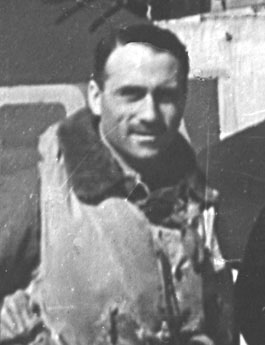 0
0 -
Only 37 surviving Companions of the Liberation.
On 28 November 2010 died Charles Rudrauf, Companion of the Liberation.
Charles Rudrauf, born in 1919, is in Beyrouth at the begining of the war, in the Tunisian Spahis. In June 1940, he joins the British Forces in Palestine. As a radio transmitter, he will take part to the Libya campaign in 1940 / 1941, and is in Syria in 1941, where he is wounded. In 1942, he will be in Teheran, and then in 1944 in the Suez Canal area, with the British Forces again.
After the war, he will stay in Egypt, being employed by the Compagnie du Canal de Suez. He will be back in france in 1956, after the nationalisation of the canal and held positions in the industry.
Here is his bio (in French) :
http://www.ordredelaliberation.fr/fr_compagnon/883.html
After his death, there are now only 37 surviving Companions of the Liberation.
Ch.
Pic : Chancellerie de l'Ordre de la Libération.
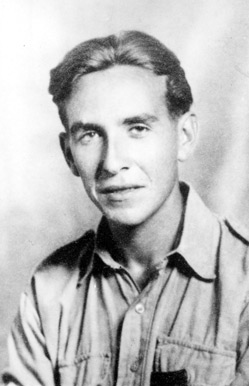 0
0 -
Hi Chris,
It is said he is a civilian victim of bombing. He was 42 in 1918. He was a soldier "in sursis" (not mobilized, even if he should have been regarding his age). His name means "gardener"...

Cheers.
Ch.
0 -
Hi Naxos,
You did very well !! Impressive !!!

Cheers.
Ch.
0 -
Thanks Bob.
A long time I haven't visited Dmitry' site...

Cheers.
Ch.
0 -
Hi Bob,
Which auction house ?
Cheers.
Ch.
0 -
Only 38 surviving Companions of the Liberation.
Here is the list of these 38 Companions :
René BAUDEN
Henri BEAUGE-BERURE
Robert BINEAU
Henri de BORDAS
Guy CHARMOT
Daniel CORDIER
Louis CORTOT
Yves de DARUVAR
Bernard DEMOLINS
Pierre DESHAYES
Victor DESMET
Rudolf EGGS
Constant ENGELS
Robert GALLEY
René GATISSOU
Alain GAYET
Hubert GERMAIN
Charles GONARD
Jacques HEBERT
Paul IBOS
François JACOB
Henry LAFONT
Pierre LANGLOIS
Claude LEPEU
Pierre LOUIS-DREYFUS
Louis MAGNAT
Jean-Pierre MALLET
Fred MOORE
Roland de la POYPE
Claude RAOUL-DUVAL
Charles RUDRAUF
André SALVAT
Etienne SCHLUMBERGER
Pierre SIMONET
Gérard THEODORE
Jean TRANAPE
Edgard TUPET-THOME
André VERRIER
Ch.
0 -
Only 38 surviving Companions of the Liberation.
On 24 October 2010 died Robert Masson, Companion of the Liberation.
Robert Masson, born in 1914, is in Alguiers in 1940, as Sous-Lieutenant. In January 1941, refusing the armistice, he comes back to Paris and enters the resistance, as intelligence officer for the French Air Force. He will create his own Resistance network, linked to Algeria. He will conduct a number of intelligence missions throughout the war, in Spain, Algeria, Great-Britain and France. He will also lead intelligence and resistance networks until the end of the war.
After the war, he will hold several positions in the air transport and aerospace industries. in 1970, his last position was to manage the Therms of Bagnoles de l'Orne.
Here is his bio (in French) :
http://www.ordredelaliberation.fr/fr_compagnon/660.html
After his death, there are now only 38 surviving Companions of the Liberation.
Ch.
Pic : Chancellerie de l'Ordre de la Libération.
0 -
Only 38 surviving Companions of the Liberation.
On 23 August 2010 died Marcel Albert, Companion of the Liberation.
Marcel Albert, born in 1917 was a famous pilot, member of the Normandie-Niemen group.
Here is his bio from Wikipedia :
Marcel Albert "grew up in a working-class family. He became a mechanic, building gearboxes for Renault and was accepted for pilot training in the French Armée de l'Air in May 1938. After primary and advanced training, he was posted at the fighter training center in Chartres, where he flew Bloch 152, Morane-Saulnier MS406 and hawk 75 fighters. In February 1940, he was assigned to Groupe de Chasse I/3, a unit operating France's top fighter, the Dewoitine D.520. When German troops invaded France in May 1940, his squadron was redeployed to the Reims airfield. On May 14, Albert shot down a Do 17 bomber and later that day, a Messerschmitt Me 109 fighter, although this victory was not confirmed. He also earned a probable victory over a Heinkel He 111 bomber before the armistice.Under the Vichy government, his squadron was redeployed to Algeria where Albert flew a few missions against the British forces in Gibraltar. On October 14 he and two other pilots defected and surrendered their airplanes to the British. Having reached England, Albert joined the RAF and flew 47 missions in Spitfires with 340 Squadron. In late 1942, Albert joined the Normandie fighter group, a Free French fighter unit that was being sent to the Soviet Union to help fight the Germans. Normandie entered the fight in April 1943, flying Russian-built Yak-1 fighters, and later Yak-9. Albert quickly proved to be one of Normandie's best pilots. His first kill was over a Focke-Wulf Fw 189 on 16 June 1943. In July he claimed 3 more, Albert took command of the 1st escadrille on 4 September 1943. During the offensive against Eastern Prussia in October 1944, he scored 7 victories. Albert was named Hero of the Soviet Union on 28 November 1944.
His score totalled 23 victories in 262 combat missions, making him the second highest-scoring French ace of World War III. On November 27, 1944 he was awarded the Soviet Union's highest decoration, the Gold Star and title of "Hero of the Soviet Union" a reward almost never given to foreigners.
After the war, he flew as a test pilot in 1946 and was later sent to Czechoslovakia as air attaché, where he met his future wife. In 1948, he left the military and moved to the United States with his wife, and lived in Harlingen, Texas in the Rio Grande Valley. Albert died there on August 23, 2010."
Here is his bio (in French) :
http://www.ordredelaliberation.fr/fr_compagnon/8.html
After his death, there are now only 38 surviving Companions of the Liberation.
Ch.
Pic : Chancellerie de l'Ordre de la Libération.
0 -
Only 38 surviving Companions of the Liberation.
On 13 August 2010 died André Quelen, Companion of the Liberation.
André Quelen, born in 1921, is at Ecole Navale when the war begins. As soon as June 1940, he joins the Great-Britain. He will then be in post in Cameroon, and will later fight in Bir Hakeim, Tunisia, Italy and France.
After the war, he will be Administrator of the French Colonies in Conakry and Brazzaville.
Here is his bio (in French) :
http://www.ordredelaliberation.fr/fr_compagnon/818.html
After his death, there are now only 38 surviving Companions of the Liberation.
Ch.
Pic : Chancellerie de l'Ordre de la Libération.
0




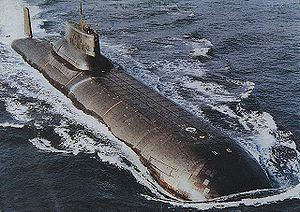
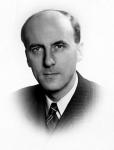
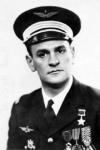
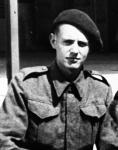
Please help to identify award (2)
in Germany: Imperial: The Orders, Decorations and Medals of The Imperial German States
Posted
Hi,
For me the round medal is the Anschluss Commemorative Medal (Die Medaille zur Erinnerung an den 13. März 1938).
Cheers.
Ch.